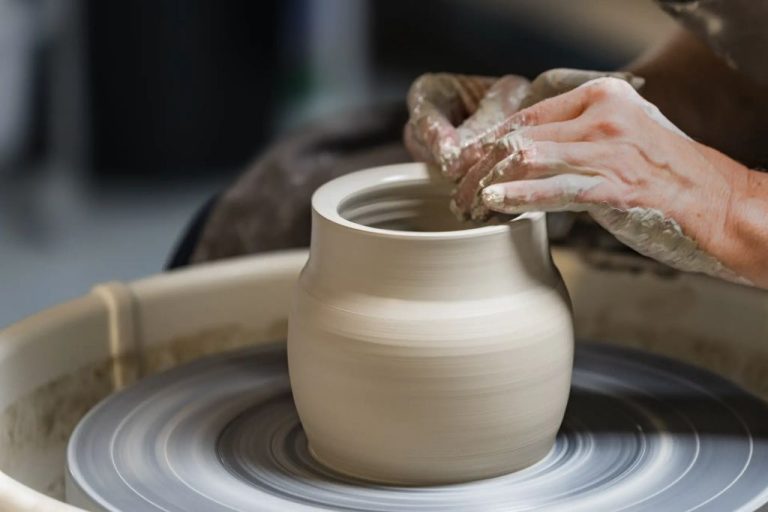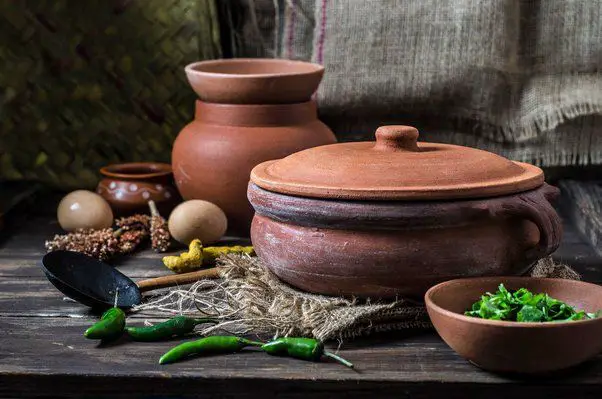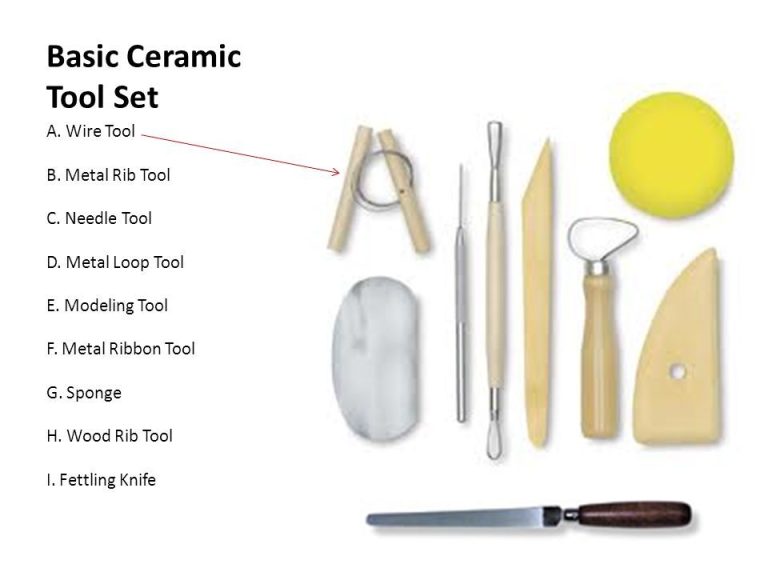Can I Use Clay To Make A Mask?
Clay masks have become increasingly popular in recent years as a home spa treatment. Clay has been used for thousands of years to help cleanse and nourish skin. The resurgence of these ancient beauty rituals has led to clay masks being a staple in many self-care and skincare routines.
Clay masks help draw out impurities from pores while providing nutrients to the skin. They can leave your face feeling fresh, soft, and renewed. The process of applying a clay mask can also be a relaxing and therapeutic experience.
With so many different clays and custom recipes, you can create a clay mask perfect for your skin type. Making your own clay mask at home allows you to control the ingredients and avoid additives or chemicals found in store-bought varieties. The natural botanicals often used in DIY clay masks make them an ideal choice for those with sensitive skin or seeking cleaner beauty regimens.
Types of Clay for Masks
There are several types of clay that can be used to make facial masks, each with their own unique properties and benefits:
Bentonite Clay
Bentonite clay is formed from volcanic ash and is rich in minerals like silica, calcium, magnesium, and sodium. It has a strong negative electrical charge which allows it to absorb toxins, oils, and impurities from the skin. Bentonite clay masks are great for oily and acne-prone skin.
Kaolin Clay
Kaolin clay, also known as China clay, is white in color and has a soft, creamy texture. It is the gentlest of the clay varieties and is suitable for sensitive skin. Kaolin clay gently exfoliates dead skin cells and impurities without over-drying the skin.
French Green Clay
French green clay contains decomposed plant matter and iron oxides which give it its distinctive green color. It is rich in minerals like potassium, calcium, and magnesium. French green clay draws out impurities from the skin and stimulates circulation. It is ideal for combination and dull skin.
Benefits of Clay Masks
Clay masks provide a variety of skin benefits that make them a popular choice for at-home facials and skincare. Some of the top benefits of using clay masks include:
Absorb Impurities
Clay has strong absorbent properties that help pull dirt, oil, and other impurities out of the skin. This helps clean pores, remove blackheads, and reduce the appearance of enlarged pores. The minerals in clay have a negative charge that bonds to the positively charged toxins in your skin, lifting them away.
Reduce Acne
By absorbing excess oils and reducing the oils on the surface of the skin, clay masks help prevent acne breakouts. The minerals in clay also have anti-inflammatory and antimicrobial properties that further soothe and calm acne. Using a clay mask regularly can help clear up existing breakouts.
Improve Skin Texture
Drawing out impurities smooths and refines the skin for a more even tone and texture. Clay masks gently exfoliate the top layer of dead skin cells, leaving skin looking radiant. The minerals in clay also promote circulation to revitalize dull and tired skin.
Best Practices for Using Clay Masks
To get the most out of your clay mask, it’s important to follow some best practices when applying and using the mask. Here are some tips for maximizing the benefits of clay masks:
Cleanse skin first – Always start with a clean face. Wash your face beforehand to remove any dirt, oil, or makeup. This allows the clay mask to better absorb into your skin.
Apply evenly in thick layer – Use enough clay mask to cover your face in an even, thick layer. Avoid applying too thinly. The clay needs to sit on the skin to draw out impurities.
Avoid eye area – Be careful not to apply the clay mask too close to your eyes. The thin skin around your eyes is sensitive. Leaving clay on this area can lead to irritation.
By properly cleansing, applying, and avoiding the eye zone, you can maximize the benefits from your clay mask. Taking these simple steps allows the clay to work its magic!
Making Your Own Clay Mask
Making a clay mask at home is easy and only requires a few simple ingredients. Here are the basic steps:
Mix the Clay
Start with about 1-2 tablespoons of cosmetic clay powder. Bentonite and kaolin are common clays used for masks. Slowly mix the clay powder with water, aloe vera gel, floral water, apple cider vinegar or oils like coconut, olive or almond to achieve a smooth, spreadable consistency. The clay should be thick but not runny.
Add Other Ingredients
You can customize your clay mask by adding other natural ingredients with beneficial properties. Some options are:
- Honey – moisturizing and soothing
- Oatmeal – exfoliates and calms irritation
- Yogurt – lactic acid gently exfoliates
- Tea tree oil – antibacterial and clarifying
- Rosewater – hydrating and softening
Add about 1 teaspoon of these extra ingredients to boost the effects of your mask.
Mix Well and Apply
Use a small whisk or spoon to thoroughly incorporate any added ingredients. Apply the mask evenly to clean skin, avoiding the eye area. Let it dry for 5-15 minutes before rinsing off with warm water. For oily and acne-prone skin, allow the mask to fully dry for maximum oil absorption.
Storing Clay Masks
Properly storing your clay masks is important to maintain freshness and effectiveness. Here are some tips for storing clay masks:
Refrigerate homemade masks: If you make your own clay mask at home, store any leftover mask in an airtight container in the refrigerator. The cool temperature will help prevent bacterial growth and keep the ingredients potent. Refrigerated clay masks can typically last up to a week.
Keep dry clay powder in an airtight container: Unmixed clay powder should be kept in an airtight container, like a mason jar or plastic container with a tight-fitting lid. This prevents the clay from absorbing moisture and keeps it dry and shelf-stable. Store in a cool, dry place away from direct sunlight.
Following proper storage methods will help maintain the quality and integrity of your clay masks. Be sure to follow manufacturer instructions for any store-bought clay masks as well. With the right storage, clay masks can be an effective skin care addition for quite some time.
Precautions for Sensitive Skin
Clay masks can be very beneficial for most skin types. However, they may cause irritation for those with sensitive skin. Here are some precautions to take:
Do a patch test first. Dab a small amount of the clay mask on your inner arm and leave it for 10 minutes. Check for any redness or irritation before applying to your face.
Don’t leave the mask on too long. Clay can draw out moisture and dry out skin. Limit your mask to 5-10 minutes before rinsing off.
Mix with soothing ingredients. Dilute the clay mask with aloe vera gel, honey, or yogurt to create a more gentle formula for sensitive skin types.
Avoid using a clay mask if you have very dry or flaky skin. The clay can be too harsh and cause further irritation.
Start slowly at first. Use the mask once or twice a week until your skin adjusts and monitor for any reactions.
Other Uses for Clay
In addition to making facial masks, clay also has many other beneficial uses for health and beauty. Here are some of the top ways to use clay besides on your face:
Clay Baths
Adding clay like bentonite or French green clay to bath water can provide therapeutic benefits. The clay’s negatively charged ions bind to the positively charged toxins on your skin. This helps draw out impurities from the body through the pores. Clay baths may also soothe skin irritations.
Clay Hair Masks
Applying a clay hair mask can help remove excess oils and product buildup from your hair and scalp. The clay’s absorbent nature helps lift dirt while adding moisture. Using a clay hair mask weekly or monthly can leave hair feeling clean and soft.
Healing Clay Packs
Making a poultice or paste with healing clays can help draw out infections, splinters, or venom when applied to the skin. Specific clays like bentonite have natural antibacterial properties that may aid wound healing. Always use clean, natural clays for these medicinal purposes.
Best Clay Mask Products
Here are some of the top-rated and most popular pre-made clay mask products on the market:
Aztec Secret Indian Healing Clay
This is a best-selling and cult favorite clay mask. It contains 100% natural calcium bentonite clay that helps deep clean pores. It doesn’t contain any added fragrances or chemicals. For best results, mix it with equal parts apple cider vinegar or water.
L’Oreal Paris Pure Clay Mask
L’Oreal offers several varieties of creamy, pre-mixed clay masks targeted for different skin types like oily, dry, dull, and uneven. The range includes masks with bentonite, kaolin, or montmorillonite clays.
Innisfree Super Volcanic Pore Clay Mask
This K-beauty mask contains volcanic ash, jeju volcanic clay, and exfoliating minerals. It’s formulated to absorb excess oil and sebum deep in the pores for cleaner, more toned skin.
GlamGlow SuperMud Clearing Treatment
This specialty clay treatment mask contains activated-X charcoal and kaolin clay to remove pore-clogging debris. It’s a celebrity and beauty editor favorite for instantly clarifying the complexion.
Origins Clear Improvement Active Charcoal Mask
This creamy, charcoal-infused mask helps extract impurities and soak up environmental pollutants. It also contains bamboo charcoal to absorb excess oil.
Conclusion
Clay masks have many benefits for the skin. The key mineral contents of clays like bentonite and kaolin provide deep cleansing, absorb oil and impurities, stimulate circulation, and unclog pores. When mixed with water or other natural ingredients, clay becomes an effective, nourishing face mask. Using a homemade or premade clay mask 1-2 times per week can help reduce acne, absorb excess sebum, minimize the appearance of pores, and improve overall skin texture and tone. Just be sure to choose an appropriate clay for your skin type, follow proper application and storage methods, and take precautions if you have sensitive skin. With regular use of clay masks as part of your skincare routine, you’ll reveal clearer, more radiant skin over time.



